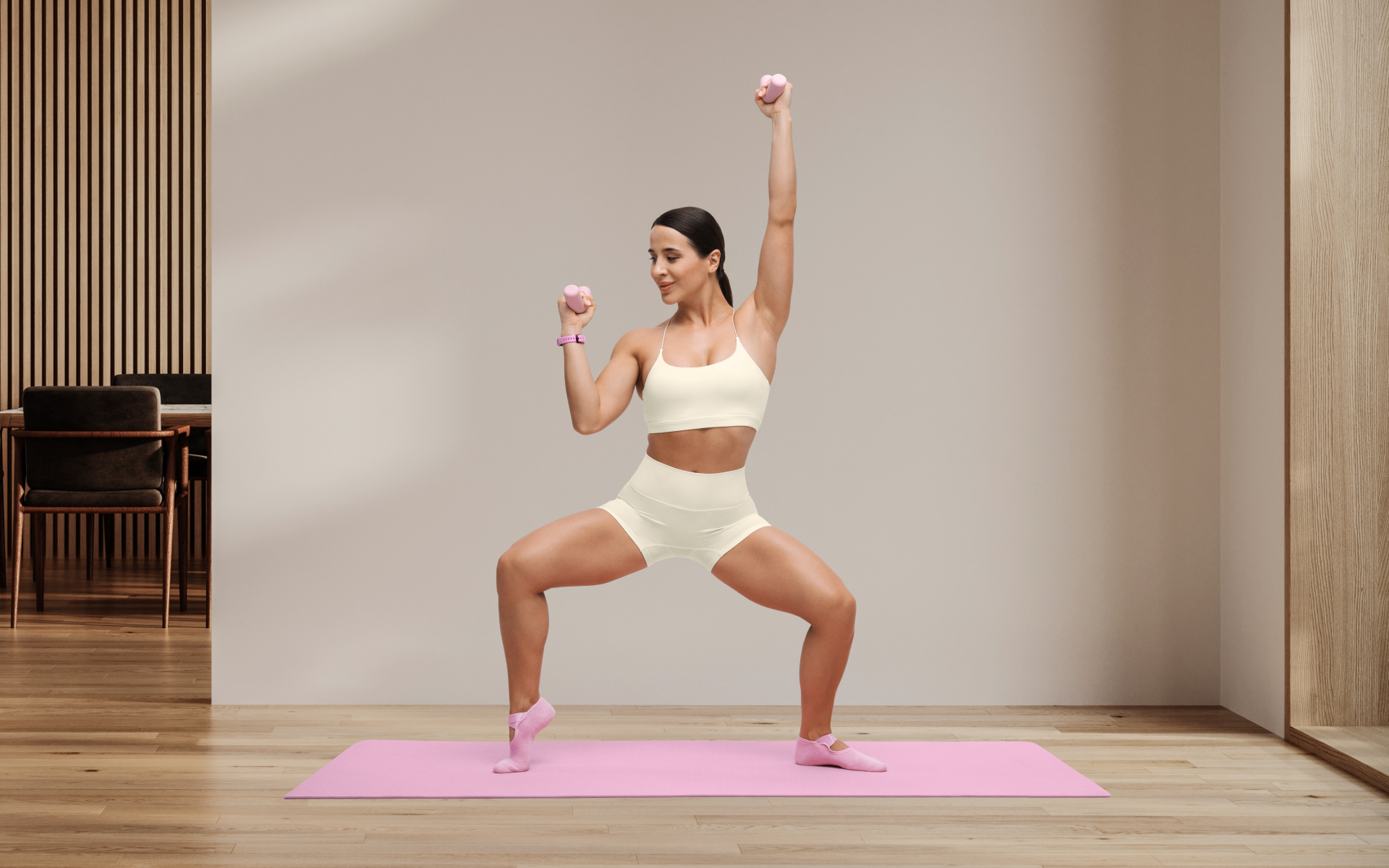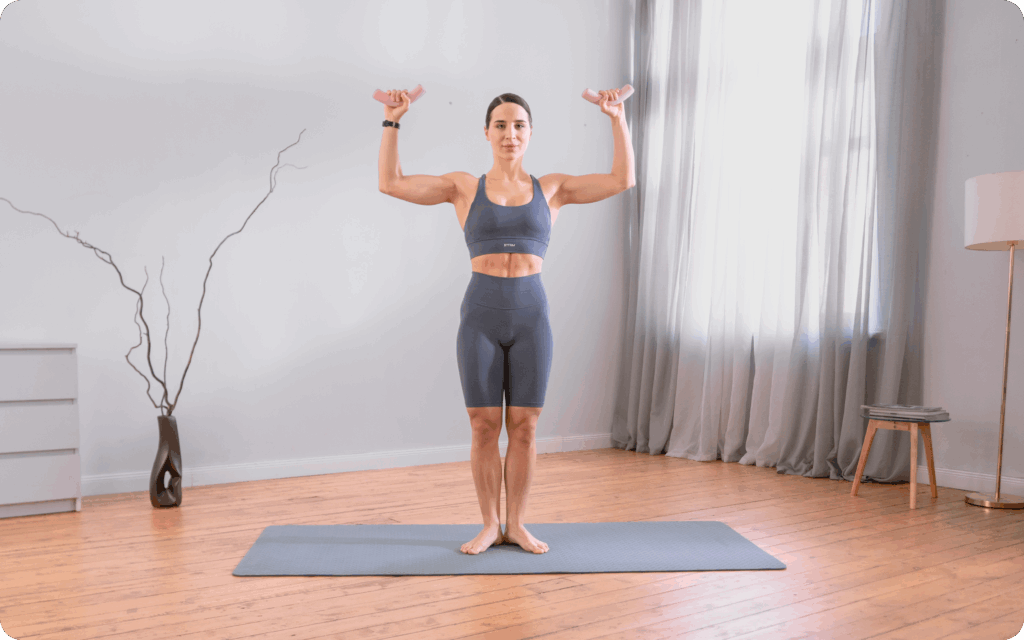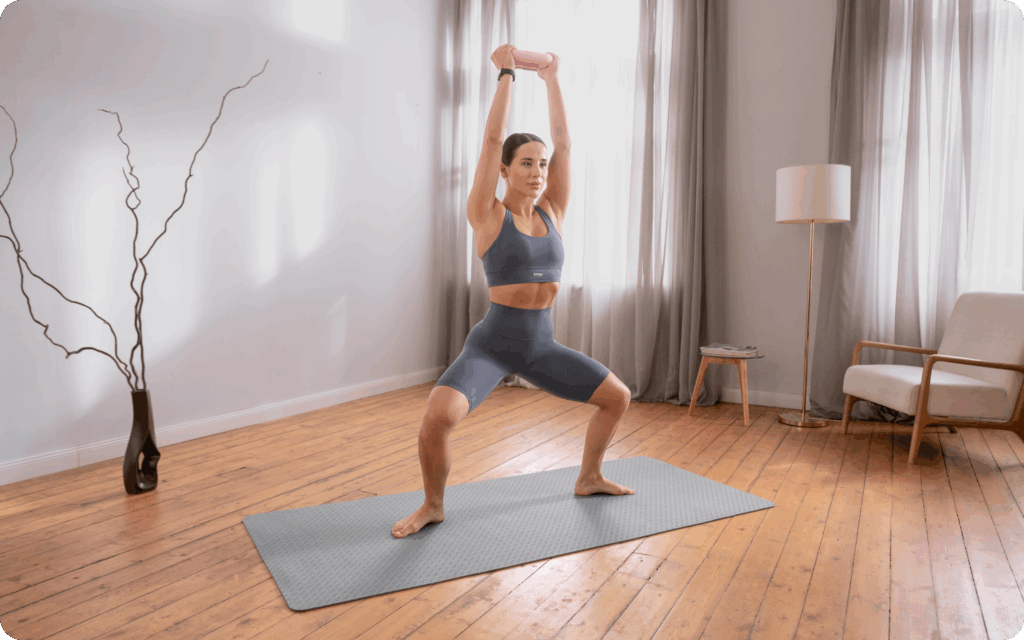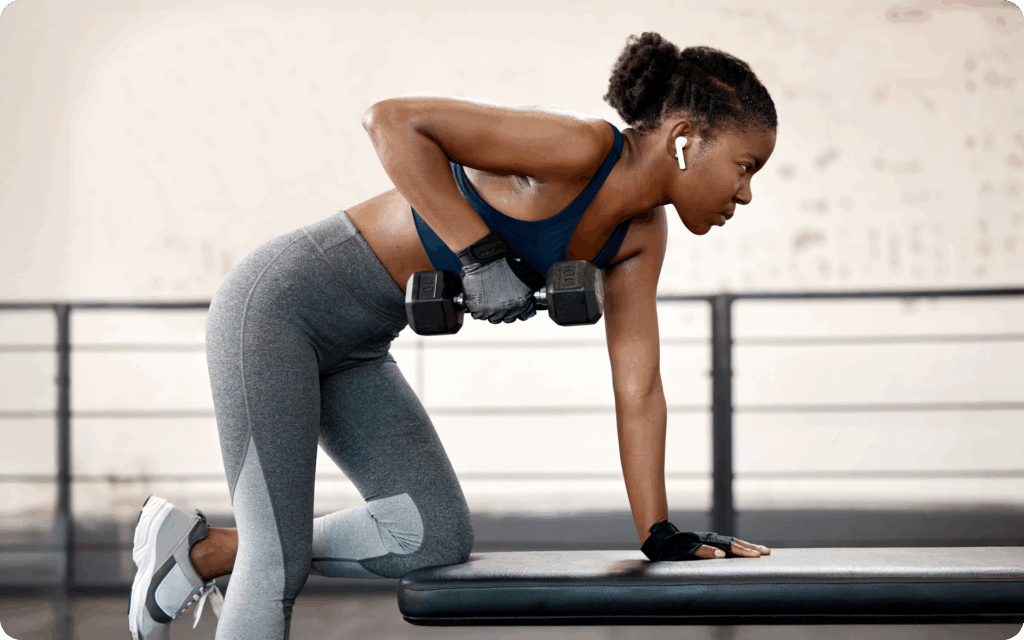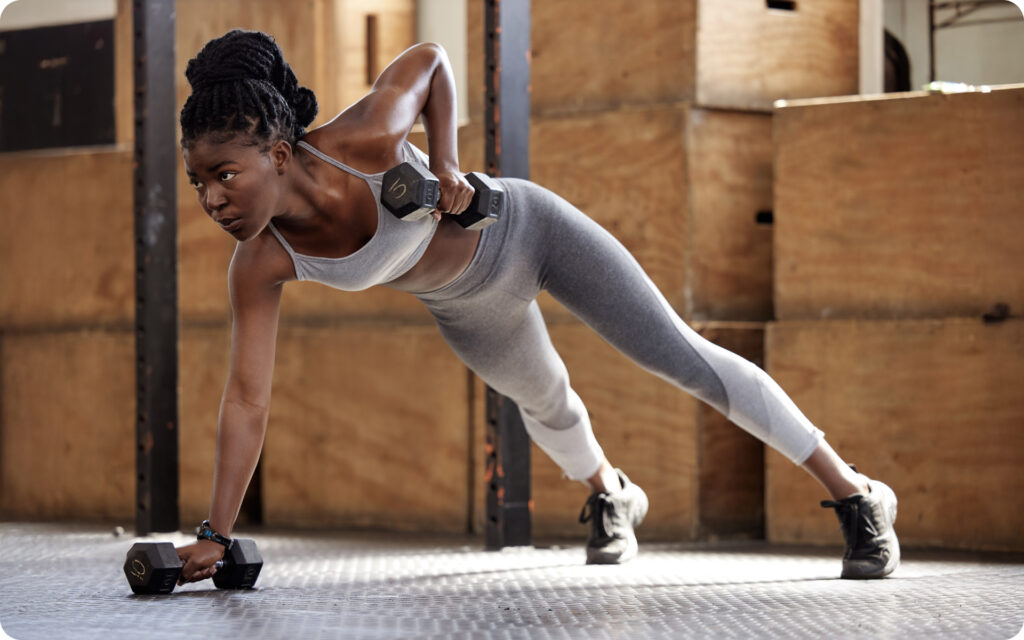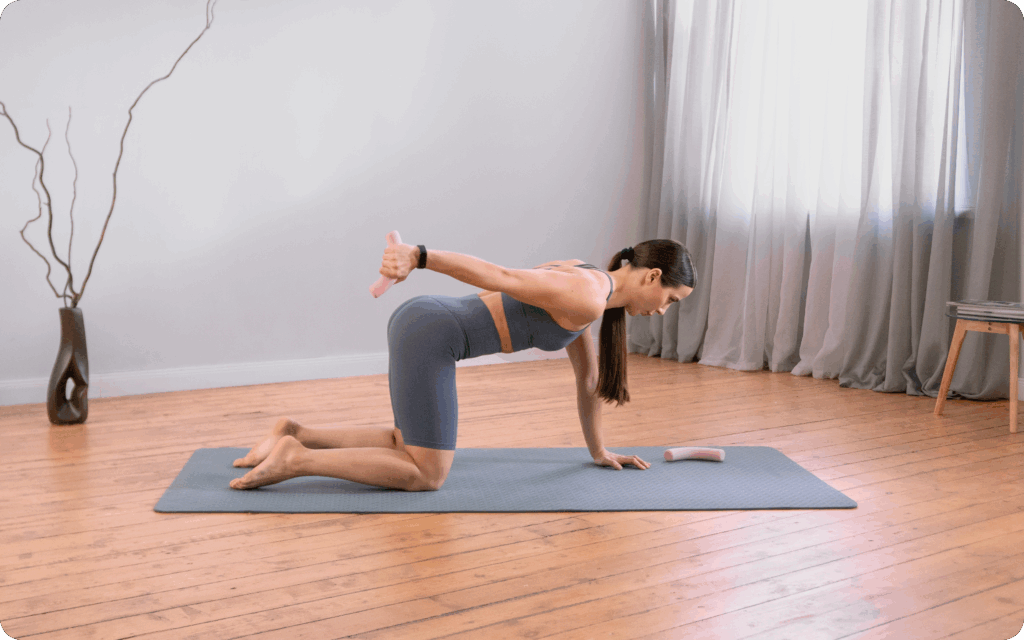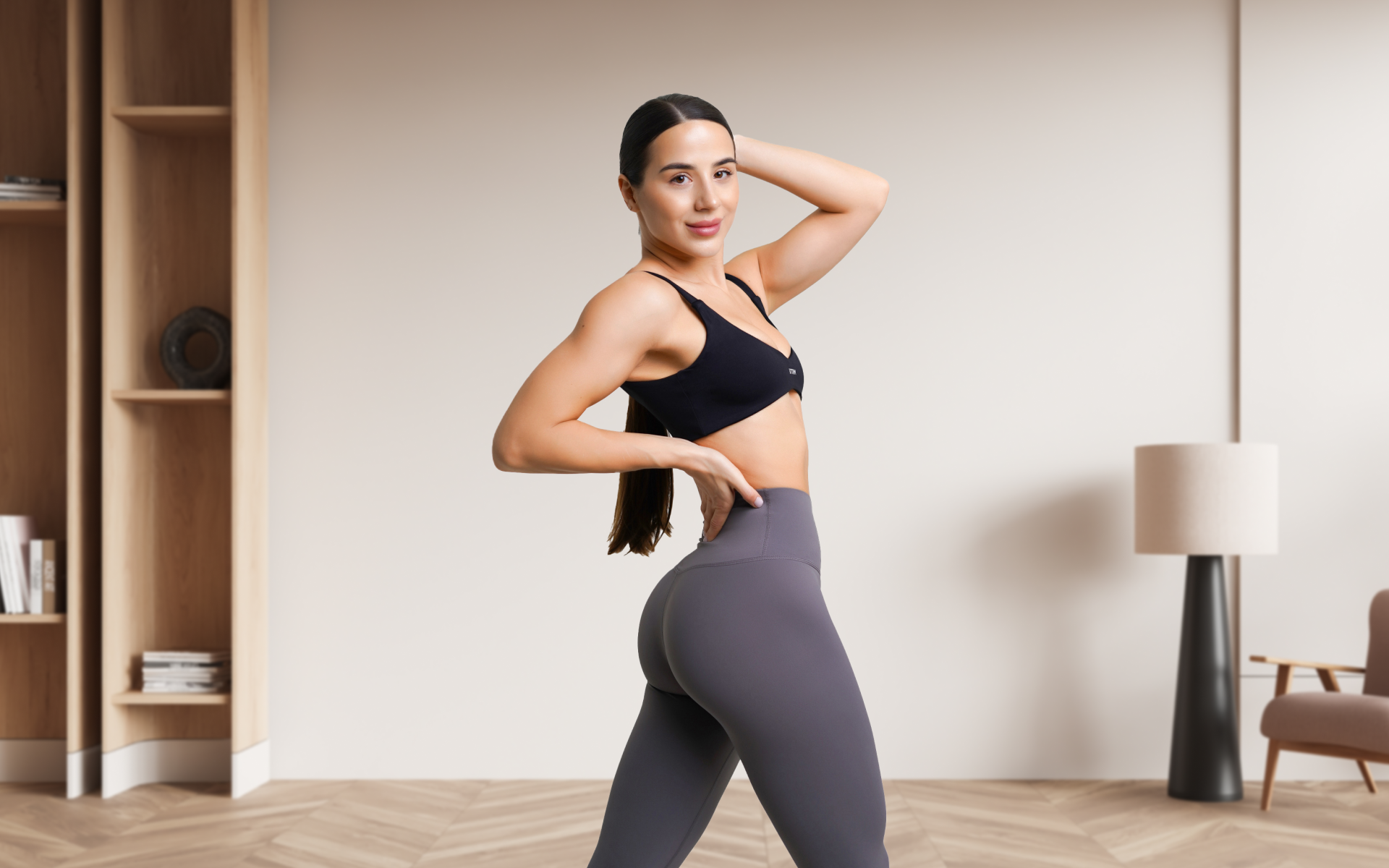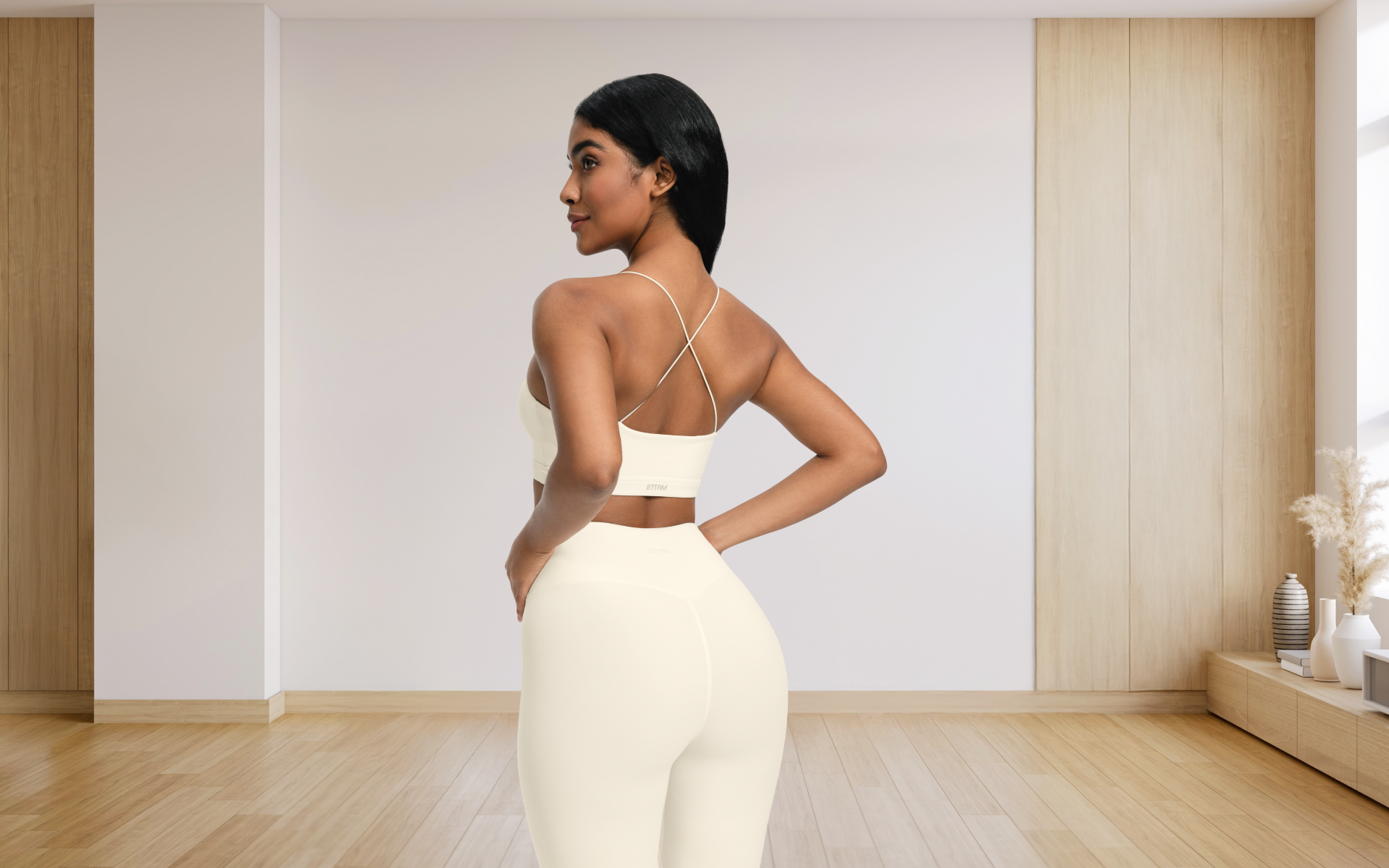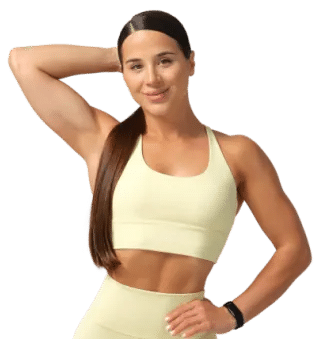Many people believe that building significant muscle, especially a strong, broad back, requires a fully equipped gym with barbells, cables, and machines.
However, a well-structured approach using only dumbbells can be efficient for building both strength and size. The key lies in understanding how to leverage dumbbells’ unique advantages to maximize muscle activation and progressive overload.
This guide will break down the science and practical application of a dumbbell-only workout plan.
We will explore how dumbbells can stimulate muscle growth, provide a detailed plan for building your back muscles, and answer common questions about this training style.
You will learn specific exercises, programming details, and techniques to help you achieve your goals with minimal equipment.
Can I Workout With Dumbbells Only?
Yes, you can achieve remarkable fitness results, including muscle hypertrophy (growth) and strength gains, using only dumbbells. The effectiveness of a dumbbell-only program hinges on applying core training principles correctly.
Recent research clarifies that dumbbells are not a compromise.
A randomized trial comparing the dumbbell and barbell bench press found that both were equally effective for improving upper-body strength and power when training volume and intensity were matched (1). This statement shows that, for many upper-body movements, dumbbells can deliver results comparable to those of barbell movements.
Furthermore, a 2023 systematic review and meta-analysis concluded that there were no significant differences in muscle growth between free-weight (e.g., dumbbell) and machine training (2).
The primary driver of hypertrophy is mechanical tension, which we can achieve by lifting a challenging weight through a full range of motion for a sufficient number of sets (3).
Dumbbells allow you to do this effectively.
Can You Build A Big Back With Just Dumbbells?
Absolutely. Building a muscular back involves targeting multiple large muscles, including the latissimus dorsi (lats), trapezius (traps), rhomboids, and erector spinae.
Dumbbells are exceptionally well-suited for this task due to the freedom of movement they offer.
Unlike barbells, which fix your hands in a specific position, dumbbells allow your joints to move through their natural planes of motion (4).
This range of motion is particularly beneficial for back training. For instance, during a dumbbell row, you can adjust your grip and elbow path to better target specific areas of the back, from the lower lats to the upper rhomboids.
This unilateral (one-sided) nature of many dumbbell exercises also forces your smaller stabilizing muscles to work harder.
Research shows that training under unstable conditions (which single-limb dumbbell work creates) increases the electrical activity (measured by EMG) in core and shoulder stabilizer muscles (5).
This single-limb effect strengthens the target muscles, improves core stability, and reduces the risk of injury.
BetterMe: Health Coaching app helps you achieve your body goals with ease and efficiency by helping to choose proper meal plans and effective workouts. Start using our app and you will see good results in a short time.
How To Get V Shape Back With Dumbbells?
Achieving the classic “V-shape” torso requires prioritizing 2 main goals:
- Widening the lats and developing the shoulders
- While maintaining a narrower waist.
Dumbbells are an excellent tool for accomplishing these goals.
1. Focus on Vertical Pulling Movements
To create width, you need to target the lats. Exercises that involve pulling the weight down from an overhead position are ideal.
While traditional pull-ups are a staple, dumbbell pullovers are a fantastic alternative that places significant tension on the lats through an extended range of motion.
2. Master Horizontal Pulling (Rows)
To build thickness and density throughout the mid and upper back, horizontal rows are essential.
Dumbbell rows allow for a greater stretch at the bottom of the movement and a stronger peak contraction at the top compared to many machine or barbell versions.
By performing single-arm rows, you also engage your core to resist rotation, adding a functional benefit.
3. Build Broader Shoulders
A V-shape is an illusion created by the ratio of shoulder width to waist circumference.
Developing the deltoids, particularly the medial (side) head, makes your upper frame appear wider. Dumbbell exercises like lateral raises and overhead presses are fundamental for building rounded, three-dimensional shoulders.
4. Prioritize Unilateral Work
Working one side at a time corrects muscle imbalances, which are common and can detract from a symmetrical physique. Unilateral training also offers a unique neurological benefit known as “cross-education.”
Studies show that training one limb can increase strength in the opposite, untrained limb (6).
This unilateral work is a powerful tool for maintaining strength during injury rehabilitation or simply ensuring balanced development. With your doctor’s discretion, start with the weaker side, then match the repetitions on the stronger side.
This matching practice will further ensure that you develop a balanced physique and that, eventually, both sides become equal.
Ready to learn the specific exercises? Explore our complete guide to the best back workouts with dumbbells.
What Is A Dumbbell Only Workout Plan To Build Back Muscles?
A structured plan is crucial for progress.
This program lasts 4–8 weeks and focuses on building a powerful back using only dumbbells. You can use the plan as a dumbbell only workout at home with minimal space.
Programming Principles
- Frequency: Dedicate 2 days per week to back-focused training.
- Volume: Aim for 10–20 hard sets of back exercises per week.
Perform a “hard set” by stopping 1–3 repetitions short of muscular failure.
- Rep Ranges: Incorporate a mix of rep ranges to stimulate different muscle-building pathways:
- 5–8 Reps: Strength and mechanical tension focus.
- 8–12 Reps: Classic hypertrophy (muscle size) focus.
- 12–20 Reps: Metabolic stress and muscular endurance.
- Progression: Use the double progression model. First, aim to hit the top of the target rep range for all sets of an exercise. Once you can do that with good form, increase the weight by the smallest increment possible for your next session.
Back-Focused Dumbbell Workout (Perform Twice Weekly)
Workout A: Strength & Width Focus
- Chest-Supported Dumbbell Row: 3 sets of 5–8 reps
- Dumbbell Pullover: 3 sets of 8–12 reps
- Single-Arm Dumbbell Row: 3 sets of 8–12 reps per side
- Renegade Row: 3 sets of 10–15 reps per side
Workout B: Hypertrophy & Thickness Focus
- Single-Arm Dumbbell Row: 3 sets of 8–12 reps per side
- Dumbbell Shrugs: 3 sets of 12–15 reps
- Bent-Over Dumbbell Reverse Fly: 3 sets of 15–20 reps
- Farmer’s Carry: 3 sets, 30–45 seconds per set
Exercise Execution Guide
1.Chest-Supported Dumbbell Row
This is an excellent exercise for a dumbbell only workout with no bench, as you can use a sturdy chair or ottoman.
- Set an incline bench (or an alternative) to a 30–45-degree angle. Lie face down with your chest supported.
- Hold a dumbbell in each hand with a neutral grip (palms facing each other). Let your arms hang straight down.
- Retract your shoulder blades first (pull them back and together), then drive your elbows up and back toward your hips.
- Keep your forearms vertical at the midpoint and avoid shrugging your shoulders.
- Squeeze your back muscles at the top, pause for one second, then lower the weights to a deep stretch under control.
2. Dumbbell Pullover
- Lie with your upper back on a flat bench or sturdy surface, feet planted and hips slightly low.
- Hold one dumbbell with both hands, pressing your palms flat against the inner plate in a diamond grip above your chest.
- Keeping elbows slightly bent, lower the weight behind your head in an arc until you feel a deep stretch along your lats (your upper arms should align with your torso).
- Focus on maintaining tight abs and a neutral spine throughout.
- Reverse the movement by squeezing your lats to bring the dumbbell back over your chest.
3.Single-Arm Dumbbell Row
- Place one knee and the same-side hand on a bench or sturdy surface, keeping your torso parallel to the floor.
- Hold a dumbbell in your other hand, arm extended and forearm vertical at the start.
- Brace your core and avoid twisting your body. Initiate the row by pulling your elbow toward your hip, keeping it close to your torso.
- Squeeze your back at the top, then lower the dumbbell with control to a full stretch.
- Complete all reps on one side before switching.
4. Renegade Row
- Start in a high plank position, gripping dumbbells with hands and feet slightly wider than shoulder-width for stability.
- Maintain a straight line from head to heels, bracing your core to avoid rotating the hips.
- Row one dumbbell up toward your waist, keeping your elbow close to the ribs.
- Pause at the top for a second, focusing on back engagement and anti-rotation.
- Lower the weight slowly, place it on the ground, and repeat with the other arm. Alternate sides for the total rep count.
5. Dumbbell Shrugs
- Stand upright with a dumbbell in each hand, arms straight at your sides and palms facing your body.
- Set your posture: shoulders down and back, chest tall.
- Lift your shoulders straight up toward your ears as high as possible, focusing on squeezing the upper traps.
- Avoid rolling the shoulders; use an up-and-down shrugging motion.
- Hold the top contraction for one second, then lower in a controlled manner.
6. Bent-Over Dumbbell Reverse Fly
- Stand with feet hip-width apart, knees soft, holding dumbbells at your sides.
- Hinge forward at the hips to about a 30–45 degree torso angle, keeping your back flat.
- With a slight bend at your elbows, sweep your arms out to the sides until your upper arms are parallel to the ground (think about moving from your shoulders, not the hands).
- Squeeze your rear delts and upper back at the top.
- Lower the weights to the starting position with control.
Whether you’re a workout beast or just a beginner making your first foray into the world of fitness and dieting – BetterMe has a lot to offer to both newbies and experts! Install the app and experience the versatility first-hand!
7. Farmer’s Carry
- Stand tall, holding a heavy dumbbell in each hand at your sides with arms fully extended.
- Set your upper back and brace your core, shoulders pulled back and down.
- Walk forward with controlled, short steps, keeping your torso upright and avoiding side-to-side swaying.
- Breathe steadily and maintain a firm grip throughout the carry.
- At the end of the interval or set distance, carefully set the dumbbells down using good lifting mechanics.
Anyone can integrate this plan into a full-body workout with dumbbells at home.
Simply add exercises for your chest, shoulders, arms, and legs on other days.
Many resources, including a dumbbell only workout app, can help structure this.
The principles are also practical for a dumbbell only workout women can use to build strength and shape.
Looking for a comprehensive schedule? Check out this 3 Day Dumbbell Workout.
What Is The King Of All Back Exercises?
While many might argue for the barbell deadlift or pull-up, others will say the Single-Arm Dumbbell Row is the king of back exercises within a dumbbell-only context.
The single-arm row offers an unparalleled combination of benefits for building a strong and muscular back.
- It allows for a massive range of motion, enabling a deep stretch in the lat at the bottom and a powerful peak contraction at the top.
- Its unilateral nature forces each side of your back to work independently, correcting strength imbalances and promoting symmetrical development (6).
- Third, it heavily engages the core musculature (specifically the obliques and transverse abdominis) to resist the rotational forces, building functional, real-world strength (7).
- You can load the row progressively and heavily, making it a primary driver of mechanical tension for back growth.
Read more: Ab Workout With Dumbbells Female Edition: 4 Must-Have Exercises
Is 10 Minutes Of Dumbbells Enough To Build A Big Back?
10 is not enough time to build a big back, or any muscle group, to its full potential.
Building muscle requires a specific amount of training volume, which is the total number of hard sets performed per week. For most people, this is between 10–20 sets per muscle group (8).
A 10-minute workout would likely only accommodate 3–4 sets after a brief warm-up.
While this is better than nothing and can help maintain muscle, it falls short of the optimal stimulus needed for significant hypertrophy. A dedicated back workout should last 45–60 minutes, including a proper warm-up, multiple exercises targeting different back regions, and adequate rest between sets.
If you are short on time, you can use intensity techniques like supersets (pairing 2 exercises back-to-back) or rest-pause sets (taking short intra-set breaks) to increase workout density.
However, for substantial growth, dedicating more time is necessary.
Want to pair your back training with arm work? Here is a great back and tricep workout.
Yes, using just dumbbells is an excellent way to build muscle and strength. They offer a greater range of motion, help correct muscle imbalances through unilateral training, and increase stabilizer muscle activation, which can improve joint health and functional strength. Both have their place. Heavier dumbbells in the 5-8 rep range are superior for building maximal strength, while moderate-to-lighter dumbbells in the 8-20+ rep range are highly effective for hypertrophy (9). A complete program should use a variety of weights and rep schemes to achieve optimal results. Absolutely. Dumbbells are a form of free weights, and using them for resistance training is unequivocally “lifting weights.” This form of training is essential for increasing bone density, building lean muscle mass, and boosting metabolism (2). For most general fitness and muscle-building goals, yes. A well-designed dumbbell-only workout can provide the necessary stimulus for hypertrophy and strength gains. The only limitation is the absolute load, which may become a factor for advanced powerlifters or strongmen aiming to maximize their one-rep max in barbell-specific lifts.Frequently Asked Questions
Is just using dumbbells good?
Are heavier or lighter dumbbells better?
Does lifting dumbbells count as lifting weights?
Can dumbbell workouts replace gym workouts?
The Bottom Line
Building an impressive physique doesn’t require access to a commercial gym. By understanding the principles of muscle growth and applying them with a thoughtful dumbbell-only workout plan, you can effectively target every muscle in your body.
This approach provides the freedom to train anywhere while leveraging unique biomechanical advantages to build a strong, symmetrical, and resilient body.
You can only limit your progress by your consistency and effort.
DISCLAIMER:
This article is intended for general informational purposes only and does not serve to address individual circumstances. It is not a substitute for professional advice or help and should not be relied on for making any kind of decision-making. Any action taken as a direct or indirect result of the information in this article is entirely at your own risk and is your sole responsibility.
BetterMe, its content staff, and its medical advisors accept no responsibility for inaccuracies, errors, misstatements, inconsistencies, or omissions and specifically disclaim any liability, loss or risk, personal, professional or otherwise, which may be incurred as a consequence, directly or indirectly, of the use and/or application of any content.
You should always seek the advice of your physician or other qualified health provider with any questions you may have regarding a medical condition or your specific situation. Never disregard professional medical advice or delay seeking it because of BetterMe content. If you suspect or think you may have a medical emergency, call your doctor.
SOURCES:
- Randomized Trial Comparing Barbell and Dumbbell Bench Press on Maximal Strength and Power Output (2024, .journalofstrengthandperformance.com)
- Effect of free-weight vs. machine-based strength training on maximal strength, hypertrophy, and jump performance – a systematic review and meta-analysis (2023, bmcsportsscimedrehabil.biomedcentral.com)
- Anabolic signals and muscle hypertrophy – Significance for strength training in sports medicine (2025, sciencedirect.com)
- Force reserve predicts compensation in reaching movement with induced shoulder strength deficit (2024, pmc.ncbi.nlm.nih.gov)
- Comparison of the Electromyography Activity during Exercises with Stable and Unstable Surfaces: A Systematic Review and Meta-Analysis (2024, mdpi.com)
- Unilateral strength training leads to muscle-specific sparing effects during opposite homologous limb immobilization (2017, pmc.ncbi.nlm.nih.gov)
- Importance of Rotational Exercises for Functional Activities (2024, capitalareapt.com)
- A Systematic Review of The Effects of Different Resistance Training Volumes on Muscle Hypertrophy (2022, pmc.ncbi.nlm.nih.gov)
- Loading Recommendations for Muscle Strength, Hypertrophy, and Local Endurance: A Re-Examination of the Repetition Continuum (2021, pmc.ncbi.nlm.nih.gov)
